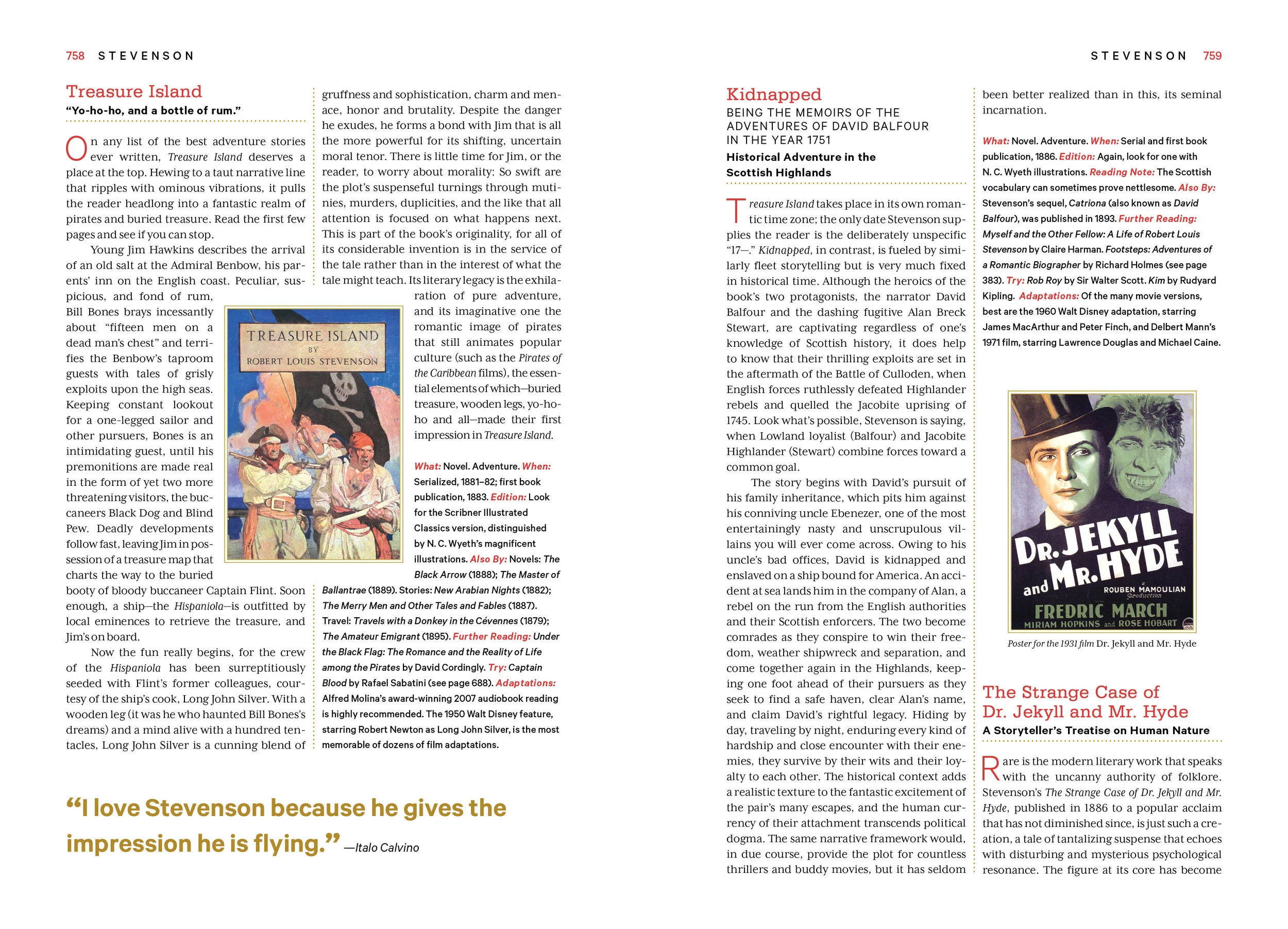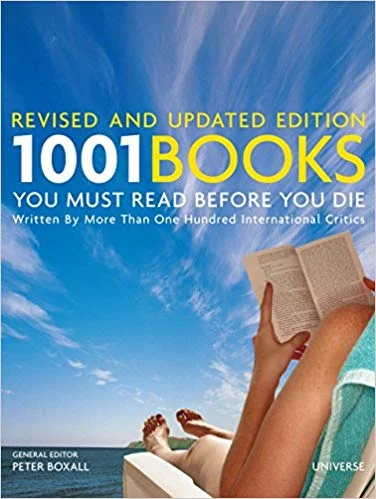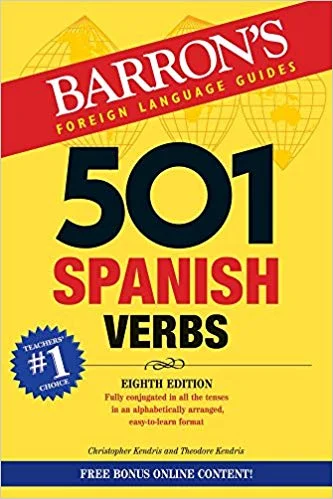Two Thousand, Five Hundred and Two Books to Read or Die Trying
Which books, and how many, must we read before we die?
BY MATTHEW HEIN
Considered:
501 Must-Read Books
Bounty / Octopus (Hachette), 2006
ed. Emma Beare
1001 Books You Must Read Before You Die
Quintessence / Universe / Rizzoli, 2006, 2010
ed. Peter Boxall
1,000 Books to Read Before You Die: A Life-Changing List
Workman, 2018
by James Mustich (with three assistants)
501 Spanish Verbs: Fully Conjugated, 4th edition
Barrons, 1996
by Christopher Kendris
REMEMBER THE RAVES that heralded James Mustich’s entry into that evergreen seasonal micro-genre that is “The Book About Books, With Pictures”?
1,000 Books to Read Before You Die discusses a thousand books in nine hundred forty-eight pages. That’s about .95 pages per recommendation. This book, subtitled “A Life-Changing List” by either Mustich or his collaborators at the “Before You Die” series, received very positive reviews. The New York Times, Washington Post, Chicago Tribune, and Publishers Weekly all loved it.
Those who harbor guilt over incomplete assignments from their formal educations—Frankenstein, Our Mutual Friend, Dante’s Paradiso—hardly need new assignments. But Mustich’s book, pleasingly designed by Janet Vicario, offers something special: pretty pictures. They’re well-chosen: sexy author portraits, cool first-edition covers, and pages of hand-corrected drafts.
A spread from the Robert Louis Stevenson entry in 1,000 Books to Read Before You Die.
Those positive reviews for last winter’s book mostly ignored 2010’s 1001 Books You Must Read Before You Die. Michael Dirda mentioned it in the Post, and (correctly) noted that it’s the work of a big committee (“over one hundred international critics”), and leans toward classics rather than quirk.
The two similarly titled books share a lot of recommendations, as you would expect. After all, the 1001 Books You Must Read (as opposed to 1,000 Books to Read) came out in 2006 and was revised in 2010. And I’ve already read Elena Ferrante. What besides Elena Ferrante and a comma was 1001 Books You Must Read missing that required a follow-up one decade later?
First off, the You Must series (general editor Peter Boxall) misses about an inch of vertical page space. On the other hand, it’s about 960 instead of 948 pages. Boxall’s compilation also lacks the personal touch (and the worship that Mustich’s reputation endows). Its “over one hundred international critics” contribute 300-word entries. (That’s one minute of silent reading for the average college sophomore, incidentally.) Some of these are spicy, and even clever. Limitations and imperfections of the recommended books are honestly acknowledged. The entry for Richard Brautigan’s In Watermelon Sugar merely recounts that novel’s beside-the-point plot in deadpan simple sentences. The Finnegan’s Wake entry fittingly eats its own tail. Each contributing editor receives a tiny bio at the compendium’s beginning, so you can follow who was assigned Melmoth the Wanderer or Hallucinating Foucault, if that’s your idea of fun.
The bio of To Read’s lead author James Mustich, on the other hand, extends beyond two sentences to industry-wide reputation. His book catalog, “A Common Reader,” and his subsequent Barnes and Noble blog apparently had many fans. He seems to have done his share to dig up lost classics—a perfect background for this project. Boxall and his three assistants, on the other hand, recommend particular translations and editions, which is far and away the best non-pictorial feature of any of these books.
Another difference between these two tomes: On pages two and three of Peter Boxall’s otherwise pointless intro to Must Read, he discusses the difficulty of defining the novel, rather than a novella or memoir. His project is really a list of 1,001 (sorry, “1001”) novels you must read before you die. Mustich’s list includes oddities like The Anatomy of Melancholy, the six-volume Lyttelton Hart-Davis Letters, and The 9/11 Commission Report.
Neither The Anatomy nor Finnegan’s Wake appear in a third (or, chronologically, first) collection, 501 Must-Read Books. Our Mutual Friend opens the “Classic Fiction” section, which also includes The Iliad (no particular translation), but not The Odyssey. The unsigned intro, perhaps by project editor Emma Beare, uniquely positions this volume as “the wisest, cleverest, best read and trusted friend you have ever had,” and promises spoiler-free recommendations. This one has the highest book-to-page ratio, at better (or worse?) than 1:1. It also organizes its books categorically (modern fiction, science fiction, travel). It is corny and amateurish in typeface, layout, prose, and inclusions; however, the genre-oriented organization in 501 Must-Read makes it an easy pleasure to leaf through the categories, like children’s books or thrillers.
Page spread from 501 Must-Read Books.
The greatest advantage of the otherwise lowbrow 501 volume is in its omission—not the omission of 500 (or 501) entries, but the omission of three words from its title: “before you die.” The Bounty/Octopus publishing group may have removed this deadline as acknowledgement of how many other things we simply must get around to. They themselves also offer collections of 501 Must-Drink Cocktails, which may be worth keeping to-hand when considering two of their other books, 501 Most Notorious Crimes and 501 Most Devastating Disasters.
Universe Publishing, however, feels no pity for the human’s short lifespan, piling on the assignments. 1001 Albums You Must Hear Before You Die presents a realistic challenge, but 1001 Golf Holes You Must Play Before You Die, Revised and Updated borders on an act of bad faith.
Workman Publishing’s own “Before You Die” concept is also a copyrighted series, of course. It includes not only James Mustich’s reading list, but also a Recordings to Hear, Places to See, and Foods to Eat. It all seems quite sensual.
Workman may be missing a trick by failing to offer a “Before You Die” records-books-and-food tourism service. Readers, listeners, eaters, and travelers forced to fill this gap independently may consider Barron’s 501 Spanish Verbs. Whether they are in fact “fully conjugated in all the tenses” remains to be seen. Whether they are entirely “easy to learn” may be disputed by different readers. But really, what else were you busy doing with your one wild and precious life?
Matthew Hein is a writer, critic, and tap dance instructor living in San Diego, California.











